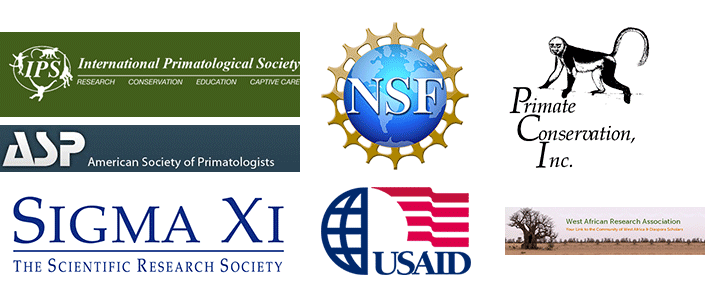Research
Photo © Emily Beam
Research in the Lambert Lab currently centers on ecological and evolutionary questions related to species coexistence, the biology of resilience, and rapid evolution – as understood through the lens of feeding biology and diet. Data on diet and nutrition intersect at numerous theoretical and empirical scales, with implications for understanding both the evolutionary past and the reality of living in the ever-changing ecological present of human-modified habitats. All animals must and how wildlife meets their nutritional and energetic needs shapes their interactions with other species, including humans. Yet, with dramatic human-driven shifts in landscapes and food webs how animals make a living are undergoing an unprecedented rate of change and intensity of selection. With this in mind, Joanna and her team investigate the diet and nutritional biology of wild mammals (especially primates & carnivores) using an integrative array of methods on animal behavior, physiology, genetics, nutritional chemistry, animal interactions with humans, and human attitudes towards animals in landscapes spanning the gamut of anthropogenic conversion. This work spans the spectrum from some of the most remote wild places on the planet to urban centers.
Joanna’s has been studying wild mammals since the early 1980s when she explored demography and site selection in rodents and lagomorphs in forest fragments in northern Illinois. She has been working in equatorial Africa for 30 years, especially at Kibale National Park, Uganda, where she is the director of the Kibale Primates & Plants Project (KPPP). In addition, Joanna and her students conduct research in the western regions of North America, including in Yellowstone National Park and Rocky Mountain National Park, with a focus on carnivore (especially gray wolves and coyotes) resilience and evolution in increasingly human-impacted landscapes. Specific projects carried out in the Lambert lab have developed along two interrelated themes:
Evolutionary Ecology of Mammal Diet – a few representative examples:
- Signals of diet-related selection in the coyote (Canis latrans) genome, microbiome and metabolome
- Adaptive consequences of eclectic omnivory
- Natural selection and plasticity of feeding-related adaptations
- Genetic bar-coding of wild mammal diet
- Assimilation of starchy carbohydrate energy
- Carbohydrate fermentation and short-chain fatty acid profiles of primates and frugivorous carnivora
- Comparative gut physiology and digestive strategy in primates and carnivora
Human – Wildlife Interactions & Species Coexistence – a few examples:
- Evolution of bold behavior in gray wolves and coyotes
- Human attitudes towards carnivores as a function of experience and history of interaction with wildlife
- Behavioral indicators of stress versus habituation in coyotes
- How digestive strategy and dietary switching facilitates mechanisms of species coexistence
- How mammal fruit consumption shapes seed dispersal and forest regeneration
- How animal behavioral ecology influences human-wildlife conflict and coexistence.
- Human use of resources from plants requiring mammal seed dispersal
- Conflict and coexistence among humans and wild carnivores and primates
- Human attitudes towards resilient carnivore and primate species
Joanna and her students gratefully acknowledge research funding from:
National Science Foundation
US Agency for International Development (USAID)
Wildlife Conservation Society
Primate Conservation, Inc
Fulbright Foundation
Sigma Xi Scientific Research Society
Tinker Foundation
American Society for Primatologists
International Primatological Society
West Africa Research Association (WARA)
University of Colorado Boulder
University of Oregon
University of Wisconsin – Madison
University of Texas at San Antonio

